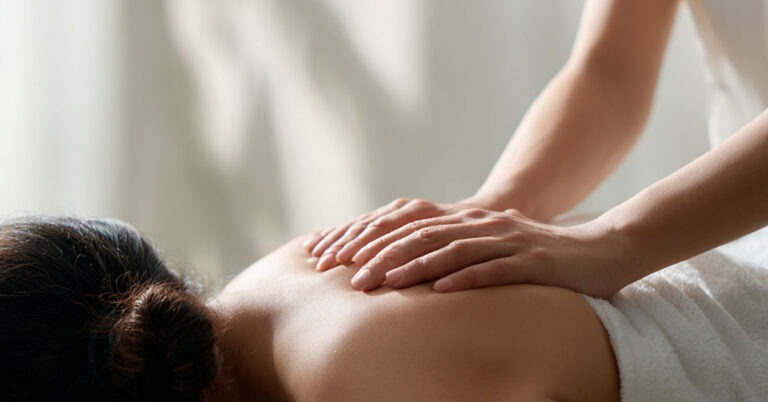
Understanding Pain
Why We Love This Chart
If you’ve visited Reno Massage Tree, you’ve probably noticed a large anatomy chart in our reception area titled “Understanding Pain.”
It’s one of our favorites because it helps explain what so many of our clients experience every day: how pain travels through the body and why it sometimes lasts longer than expected.
Pain is more than a physical sensation. It’s a message sent through your nervous system that tells your brain something needs attention.
Understanding this process can help you make sense of what you feel and how massage therapy can support recovery and long-term relief.
Here in Reno, we see all kinds of pain patterns from skiers, hikers, and mountain bikers to people who spend long hours driving from the Bay Area or Sacramento. Whether you live nearby or are just visiting, understanding how your body communicates discomfort is the first step toward lasting relief.
How Pain Works
Pain starts when nerve endings in injured or irritated tissue send warning signals up through the spinal cord to the brain.
Your brain then interprets those messages, deciding how strong the pain feels and what kind of protective response is needed.
Pain is not just a local problem in a muscle or joint. It is part of a communication network that involves your nerves, spine, and brain.
Massage therapy helps interrupt this loop by calming overactive nerves, improving blood flow, and easing the muscle tension that often keeps the pain cycle going.
Two Main Types of Pain
1. Acute Pain
This type of pain comes on suddenly, usually from injury, strain, or inflammation.
It is sharp, focused, and often short-term, your body’s way of saying, “Pay attention here.”
With rest and gentle bodywork, acute pain usually fades as tissues heal.
2. Chronic Pain
Chronic pain lasts longer than normal healing time. It can be dull, achy, or radiating, and sometimes linked to nerve irritation or long-term muscle tension.
Many of our clients experience chronic back, neck, or shoulder pain from posture, repetitive stress, or older injuries that never fully recovered.
Massage helps by loosening tight muscles, increasing circulation, and reducing the body’s stress response so pain signals quiet down over time.
Where Do You Feel Pain?
Pain can show up anywhere, including your lower back, shoulders, hips, or legs, depending on which nerves are affected.
That is why our therapists focus not just on the area that hurts, but also on the underlying muscles and movement patterns that may be contributing to your discomfort.
By improving balance and mobility throughout the body, we can help prevent the same pain from coming back.
Frequently Asked Questions About Pain and Massage Therapy
Many clients ask about how massage fits into pain management, so we’ve answered a few common questions below.
Yes. Massage therapy helps calm overactive nerves, loosen tight muscles, and improve blood flow. Over time, these effects can reduce pain signals and make movement easier.
For ongoing tension or injury recovery, you can learn more in our posts on Deep Tissue Massage and Sports Recovery Massage. For stress-related pain, read our Stress Relief Massage article to see how relaxation techniques help calm both body and mind.
Many clients benefit from consistent sessions every 2–4 weeks. Your therapist can recommend a schedule based on your pain patterns, activity level, and recovery goals.
Massage can ease surrounding muscle tension, which often relieves pressure on affected nerves. While it’s not a cure for nerve disorders, it can significantly reduce discomfort and improve mobility.
Gentle stretching, staying hydrated, using a foam roller, and practicing deep breathing all support recovery between sessions. Ask your therapist for personalized tips based on your condition.
Relief Starts with Understanding
Knowledge is a powerful part of healing. When you understand how pain works, you can make choices that support recovery, such as staying active, breathing deeply, and getting regular therapeutic massage to reset the nervous system.
Reno’s mix of high-desert adventure and everyday stress can take a toll on your body. Our Deep Tissue Massage, Sports Recovery Massage, and Stress Relief Massage options help you stay active, sleep better, and recover faster so you can make the most of your time here, whether you live nearby or are just visiting.
If pain is slowing you down, we are here to help you move freely again.


